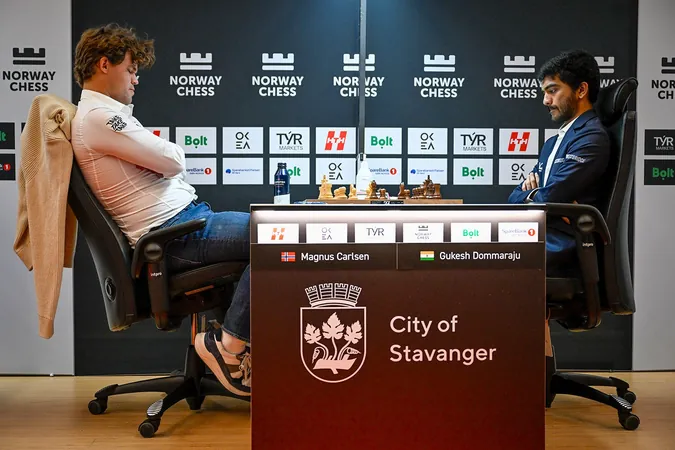
The Terrifying Reality of How the Universe Could End: Scientists Confirm the Worst Scenario!
2025-05-06
Author: Jessica Wong
The Ultimate Experiment: Simulating the Universe’s Catastrophic End
In a groundbreaking experiment, scientists in Europe have simulated a mind-boggling phenomenon known as false vacuum decay—a hypothetical event that might one day lead to the end of the universe as we know it. Using ultracold atoms, this experiment gives us unprecedented insight into one of the most catastrophic scenarios predicted by theoretical physics.
Understanding False Vacuum Decay: A Quantum Nightmare
But what exactly is false vacuum decay? It stems from the unsettling idea that our universe might not be at its most stable state. Instead, it could be trapped in what physicists refer to as a "false vacuum"—a state that appears stable but is precariously balanced. A transition to a lower-energy, true vacuum state could trigger a violent upheaval of space-time itself!
Imagine bubbles of true vacuum forming and expanding at nearly the speed of light, reshaping the fundamental laws of physics. This terrifying idea, detailed in a study published in Nature Physics, led by G. Ferrari and his team, was theorized until now but never experimentally demonstrated.
Simulating Catastrophe with Ultracold Atoms
In an innovative experiment conducted in Italy and the UK, researchers used a gas of sodium-23 (Na-23) atoms cooled to near absolute zero. This produced a ferromagnetic superfluid that mimicked the physics of vacuum decay under controlled laboratory conditions.
By expertly creating a double-well energy landscape, scientists were able to simulate a metastable state akin to a false vacuum, carefully manipulating atomic states using microwave radiation.
Witnessing the Birth of True Vacuum Bubbles!
The breakthrough didn’t stop there! Researchers meticulously tracked the spatial magnetization of the atomic cloud over time, observing that when the system remained in a metastable state, macroscopic regions flipped, generating significant bubbles.
As these bubbles emerged, their creation seemed to accelerate, aligning perfectly with theoretical predictions and highlighting how close we are to understanding this cosmic ticking time bomb.
An Unlikely Match: Theory Meets Experiment
The results bolster the instanton model, which describes vacuum tunneling events. The correlation between bubble formation times and energy barriers showcased the exquisite agreement between experimental data and theoretical models.
By tuning the system's parameters, researchers could manipulate the bubble formation timescale—ranging from mere milliseconds to hundreds of milliseconds—showcasing their precision in pushing the boundaries of quantum physics.
Revolutionizing High-Energy Physics Research
This pioneering research bridges the gap between low-energy experiments and high-energy theoretical physics, illuminating complex phenomena that were previously unreachable.
The authors emphasized that this experimental platform opens new avenues for exploring bubble formation and growth, potentially leading to groundbreaking discoveries in metastability, phase transitions, and the dynamic processes of the early universe.
Future explorations could involve deliberate bubble seeding or using controlled noise to examine the role of entanglement—ushering us into a new era of quantum exploration. Stay tuned, as who knows what further horrors of our universe await discovery!



 Brasil (PT)
Brasil (PT)
 Canada (EN)
Canada (EN)
 Chile (ES)
Chile (ES)
 Česko (CS)
Česko (CS)
 대한민국 (KO)
대한민국 (KO)
 España (ES)
España (ES)
 France (FR)
France (FR)
 Hong Kong (EN)
Hong Kong (EN)
 Italia (IT)
Italia (IT)
 日本 (JA)
日本 (JA)
 Magyarország (HU)
Magyarország (HU)
 Norge (NO)
Norge (NO)
 Polska (PL)
Polska (PL)
 Schweiz (DE)
Schweiz (DE)
 Singapore (EN)
Singapore (EN)
 Sverige (SV)
Sverige (SV)
 Suomi (FI)
Suomi (FI)
 Türkiye (TR)
Türkiye (TR)
 الإمارات العربية المتحدة (AR)
الإمارات العربية المتحدة (AR)